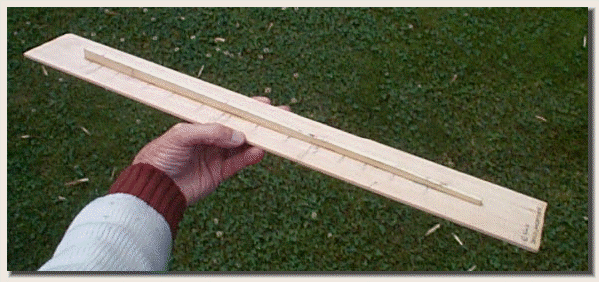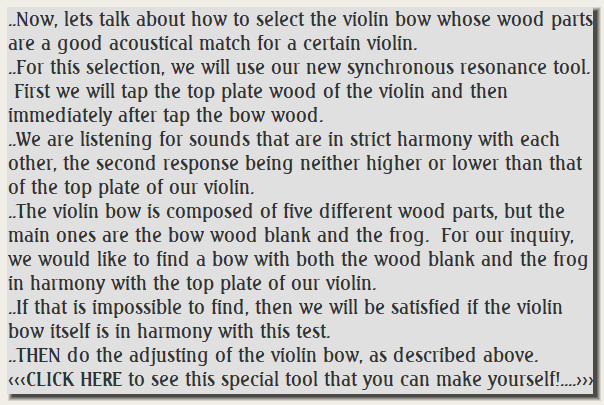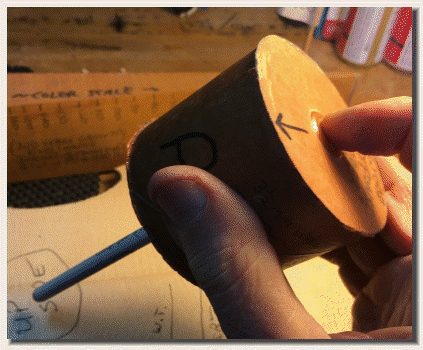Modified 4/2021
(Page VRT_36)


To rough measure violin bow tuning:
turn the bow hair side up and tap down on the bass bar section with the various parts of the bow stick; beginning at the short end and moving upward, just listening for the base note of the wood overtones. At first the sound seems even but eventually it will sound to be stepping up. Now reverse the motion until the 'walking down the stairs" stops and you remain on a level place. Again reverse to begin the stair steps. Note this frequency. This is the tap tone of the violin stick at that point.
Do the same for various points on the stick and note the frequencies down.
It is properly tuned when the tap tone all along the length of the top of the violin bow is a steady 252.7 HZ.
Please see other article to discover how to change the bow stick frequency at any point.
Additionally as you tap along on the "steady ground" section of the tool you will discover that the HIGHEST overtones suddenly increase and the decrease. This is the rough frequency of the tuning at both ends of the bow hair. (the tuning of which is ideally (227 1/2) HZ at both the tip and at the entry into the frog at the silver ferrell.
You may also turn the bow with the hair downward and tensioned properly for playing; then tap along the wood reference tool and you will hear the point where the sound increases just at the tuned frequency of the bow hair (227 1/2) hz.








